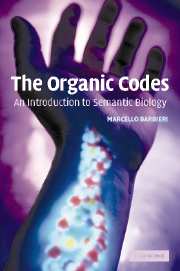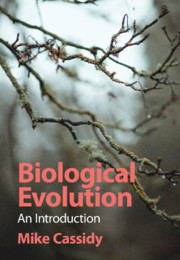The Organic Codes
The genetic code appeared on Earth with the first cells. The codes of cultural evolution arrived almost four billion years later. These are the only codes that are recognized by modern biology. In this book, however, Marcello Barbieri explains that there are many more organic codes in nature, and their appearance not only took place throughout the history of life but marked the major steps of that history. A code establishes a correspondence between two independent 'worlds', and the codemaker is a third party between those 'worlds'. Therefore the cell can be thought of as a trinity of genotype, phenotype and ribotype. The ancestral ribotypes were the agents which gave rise to the first cells. The book goes on to explain how organic codes and organic memories can be used to shed new light on the problems encountered in cell signalling, epigenesis, embryonic development, and the evolution of language.
- Presents a new explanation for the major events in the evolutionary history of life
- Contains a new mathematical model of epigenesis, to show how an embryo can increase its own complexity
- Proposes a new theory on the origin of life
Reviews & endorsements
"The text of Barbieri's book is clear and very enjoyable to read...introduc[ing] relevant and challenging ideas to the body of thought of biologists and of other science readers..." Genetics and Molecular Biology
Product details
December 2002Hardback
9780521824149
316 pages
236 × 157 × 21 mm
0.668kg
47 b/w illus.
Temporarily unavailable - available from TBC
Table of Contents
- Foreword Michael Ghiselin
- Dedication
- Acknowledgements
- Introduction
- 1. The microscope and the cell
- 2. Theories of evolution
- 3. A new model for biology
- 4. Organic codes and organic memories
- 5. The origin of life
- 6. Prokaryotes and eukaryotes
- 7. The Cambrian explosion
- 8. Semantic biology
- 9. A brief summary
- Appendix I. Definitions of life
- Afterword Jack Cohen
- Bibliography
- Index.






